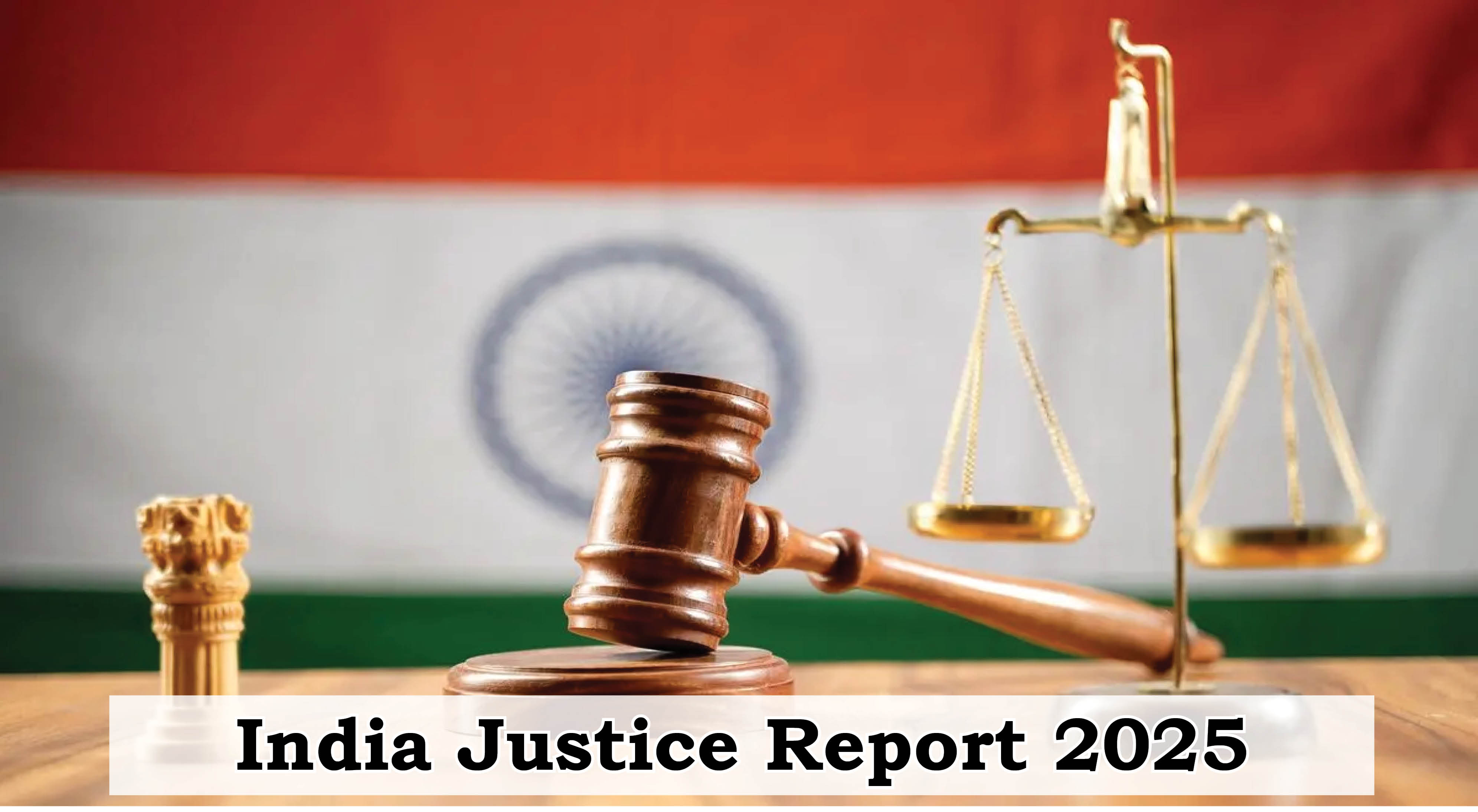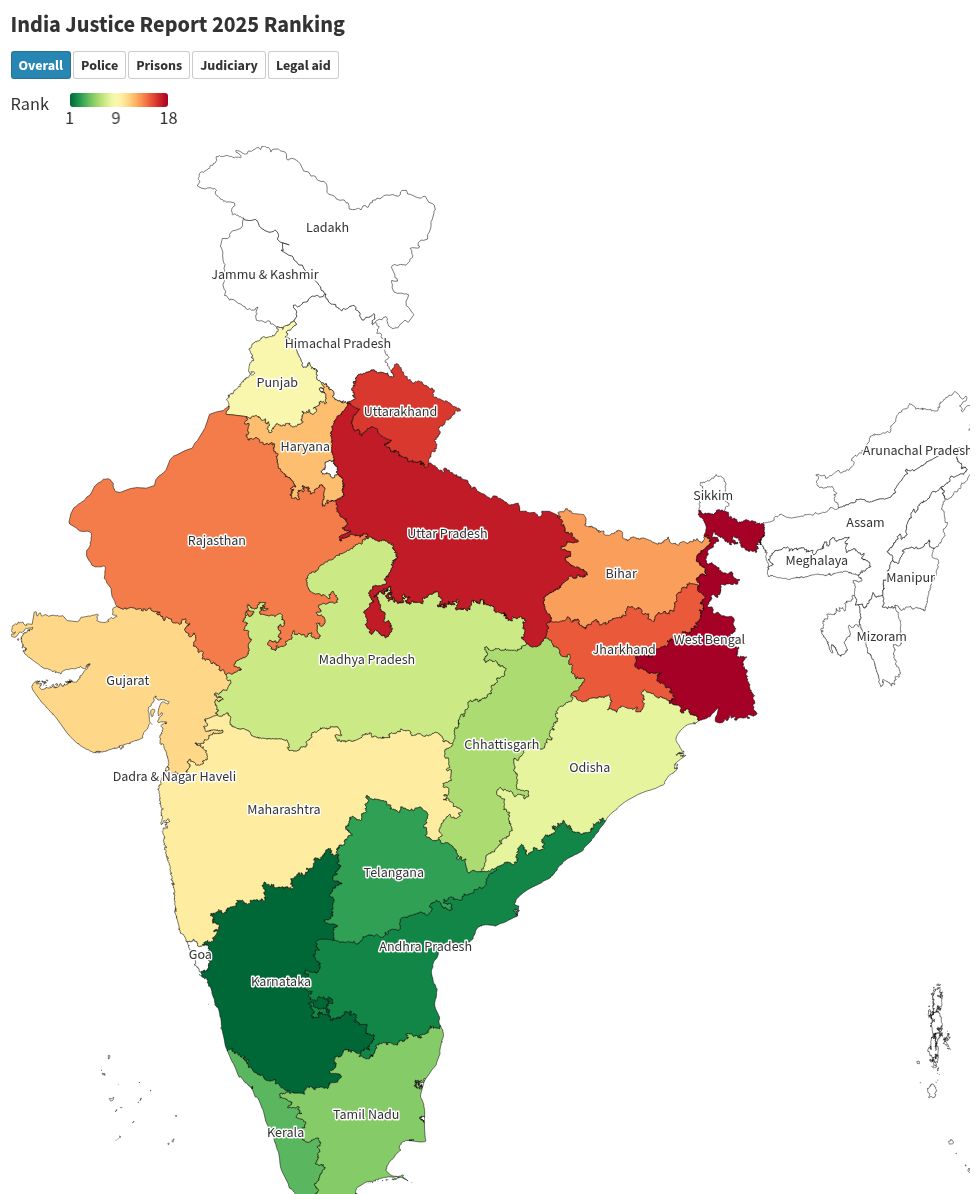Introduction:
The recently released India Justice Report (IJR) 2025 presents a comprehensive review of the country's justice system. The report evaluates broad aspects of the justice system, with the very low participation of women in the police force being a significant concern. Gender equality is essential to make the legal system more inclusive, accountable and effective.
Women in India’s Police Force: A Stark Underrepresentation
Despite India’s police force comprising over 20.3 lakh personnel, women’s participation remains strikingly low, especially in senior positions. As per the report:
- Fewer than 1,000 women officers hold senior ranks in the entire police force.
- Among the 3.1 lakh officers (excluding constables), only around 8% are women.
- Of the non-IPS women officers, over 90% occupy positions within the constabulary, with the total number of such officers standing slightly above 25,000.
This data illustrates a significant gap not just in numbers but also in terms of leadership and decision-making opportunities for women within the police system. The disproportionate distribution hampers efforts to create a gender-sensitive policing environment, particularly in cases involving crimes against women.
Why the Need for More Women in Police?
The urgency to increase women’s participation in police services is underscored by both legal and social imperatives. Several recent amendments to criminal laws and procedures mandate the presence of women officers in certain sensitive legal processes. For example:
- Arrest and search operations involving female accused must be conducted by women officers.
- Statements and reports in specific categories of cases, particularly those involving sexual assault and domestic violence, must be recorded by a female officer.
Further, data from the National Crime Records Bureau (NCRB) reveals that crimes against women account for around 10% of the total reported IPC crimes. Meanwhile, approximately 5.3% of those arrested in 2021 were women. This makes the presence of female police officers not only necessary for procedural correctness but also critical for ensuring that women victims and accused are treated with dignity and fairness.
In addition, the enactment of the Protection of Children from Sexual Offences (POCSO) Act, 2012 has widened the scope for recruiting women into policing roles, given the sensitive nature of child-related cases. Beyond legal requirements, empirical studies suggest that female officers are less likely to use excessive force, play a vital role in building community trust, and enhance access to justice, especially in cases of sexual or domestic violence.
Representation and Reservation: Current Policies and Gaps
Recognising the need for improved representation, most Indian states have adopted a policy reserving 30% to 33% of direct recruitment posts in the police force for women. This horizontal reservation ensures that women are recruited across all social categories—Scheduled Castes (SC), Scheduled Tribes (ST), Other Backward Classes (OBC), and the general category.
In cases where this minimum threshold is not met through merit-based selection, women candidates are promoted in the selection list to fulfil the quota. However, certain states still limit women’s recruitment in the armed police forces to just 10%, indicating a need for more consistent and equitable reservation policies nationwide.
Southern States Lead the Way
One of the most notable findings of the IJR 2025 is the exemplary performance of southern states across various indicators of justice delivery. Karnataka, Andhra Pradesh, Telangana, Kerala, and Tamil Nadu have all secured top positions in the report. Their success is attributed to comprehensive and consistent efforts in improving the four pillars of the justice system: police, judiciary, prisons, and legal aid.
- Karnataka ranks as the top-performing state among large and mid-sized states. It is also the only state to meet caste-based reservation quotas (SCs, STs, and OBCs) in both police and district judiciary appointments.
- Kerala has the lowest vacancy rate among high court judges, reflecting better administrative efficiency.
- Tamil Nadu leads in prison reforms, maintaining a prison occupancy rate of just 77% compared to the national average of over 131%.
- Telangana and Andhra Pradesh have secured the first and second ranks respectively in policing performance.
Challenges in Women’s Inclusion and Police Reforms
Despite policy initiatives, the actual implementation of police reforms—including those aimed at gender inclusivity—remains inconsistent due to structural challenges. Policing in India is a State subject under the Seventh Schedule of the Constitution, making reform implementation the responsibility of individual state governments.
Key challenges include:
- Inadequate recruitment infrastructure: Many states lack a permanent Police Recruitment Board, leading to irregular and ad-hoc hiring processes.
- Limited infrastructure: The absence of basic facilities such as separate toilets, restrooms, and crèche facilities in police stations discourages women from joining or continuing in service.
- Shortage of women personnel: Though financial grants have been offered by the Ministry of Home Affairs (MHA) to set up women’s desks at every police station, these often remain non-functional due to a shortage of trained female staff.
Moreover, while the merger of women police with the regular force has been proposed to improve gender parity, the actual on-ground effect of such administrative changes remains uneven across states.
Training and New Criminal Laws: The Uncertain Impact
The report also highlights a general lack of upskilling and training among police personnel. Data from the Bureau of Police Research and Development (BPR&D), NCRB, National Human Rights Commission (NHRC), and State Human Rights Commissions (SHRC) underscores the need for continuous professional development.
Simultaneously, the introduction of three new criminal laws by the central government has sparked debates. While these laws are expected to bring benefits such as speedier trials and alternative sentencing mechanisms, concerns remain about increased incarceration rates and restrictions on bail.
Conclusion
The India Justice Report 2025 paints a revealing picture of the justice delivery ecosystem in India, bringing to light the urgent need for structural reforms and gender inclusivity. While southern states have set an encouraging precedent, the overall representation of women in policing remains far from adequate. Addressing these gaps through coordinated policy, infrastructure development, and sustained investment will be vital in building a justice system that is fair, inclusive, and responsive to the needs of all citizens.
| Main question: Discuss the significance of increased representation of women in the police force in the context of criminal justice reform. Highlight the role of legal mandates and state-level initiatives in achieving this objective. |










